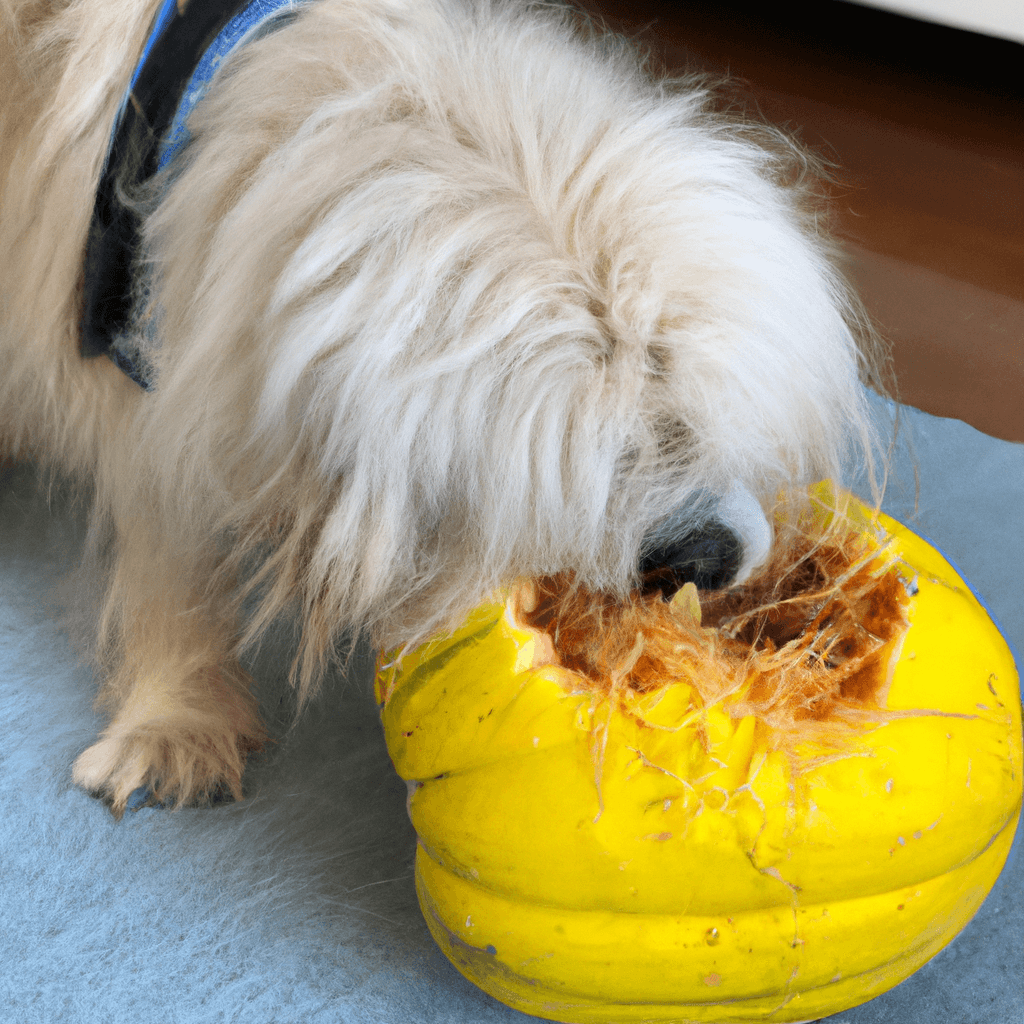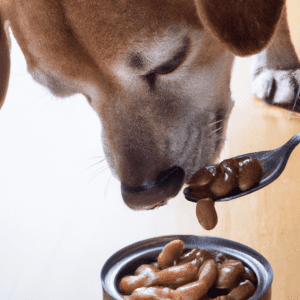Can dogs eat spaghetti squash?
Welcome to the world of canine nutrition! Today we will be discussing the question of whether or not it is safe for dogs to eat spaghetti squash. Many people assume that dogs can eat anything, but this is not the case.
It is important to be aware of which foods are safe for your furry friend. Spaghetti squash is a nutrient-dense vegetable that can be a great addition to your dog’s diet. However, there are some important considerations to keep in mind when deciding if spaghetti squash is a good food choice for your pup. We will discuss these considerations, as well as explore the potential benefits and risks of feeding your dog spaghetti squash.
The Health Benefits of Canines Eating Spaghetti Squash
If your pup is a fan of veggies, then spaghetti squash should definitely be on the menu! Not only is this delicious vegetable a great way to add some variety to your pup’s diet, it also provides some amazing health benefits.
Here’s all you need to know about feeding your pup this mouth-watering vegetable. One of the main benefits of feeding your pup spaghetti squash is that it’s incredibly low in calories. This makes it a great option if you’re trying to help your pup maintain a healthy weight.
Plus, it’s packed with essential vitamins and minerals like Vitamin A, Vitamin C, and potassium. These nutrients are important for your pup’s immune system, digestion, and overall health. Spaghetti squash is also a great source of dietary fiber.
This is important for your pup’s digestive health, as it helps keep its gut clean and healthy. Fiber also helps your pup feel full longer, making it a great snack if your pup is prone to overeating.
Last but not least, spaghetti squash is a great source of antioxidants. These powerful compounds help protect your pup’s cells from damage, which can help them stay healthy and active for longer. So there you have it – all the amazing health benefits of feeding your pup spaghetti squash. Now all you have to do is figure out how to get your pup to eat it!
How to Prepare Spaghetti Squash for Your Dog
If you’re looking for a healthy treat for your furry friend, spaghetti squash is a great option! This vegetable is high in fiber and vitamins A, C, and B-6, making it a nutritious and delicious snack for your pup. The best part: it’s super easy to prepare. Here’s how to get started:
- Start by preheating your oven to 350°F.
- Cut the squash in half lengthwise and scoop out the seeds.
- Place the squash on a greased baking sheet and brush lightly with olive oil.
- Sprinkle with salt and pepper.
- Bake for 40-45 minutes, or until the squash is tender.
- Let cool, then use a fork to scrape the strings of squash out of the skin.
- Serve the cooked spaghetti squash to your pup as a snack or meal accompaniment. And that’s it! Your pup will love this delicious, nutritious treat. Enjoy!
Is Spaghetti Squash Safe for Dogs?
Yes, spaghetti squash is safe for dogs to eat! This nutrient-rich vegetable is a great way to add some variety to your pup’s diet. It is low in calories and fat, high in fiber, and contains essential vitamins and minerals.
Plus, it tastes delicious! Make sure to cook the squash before feeding it to your pup. Boiling or steaming is best, as this will make it easier to digest. You can also add some plain, cooked ground beef, chicken, or turkey to make it even more nutritious and delicious.
It’s important to note that spaghetti squash should only be served as an occasional treat. Don’t feed it to your pup as a meal replacement, as it does not provide the same nutritional value as a balanced diet.
You should also avoid giving them too much of it at once, as too much can lead to digestive issues. Just like with any other type of food, it’s always best to consult with your veterinarian before introducing new foods to your pup’s diet.
They can provide personalized advice regarding the appropriate serving size and frequency of feeding. With its great taste and nutritional benefits, spaghetti squash is a great way to give your pup a special treat!
How to Introduce Spaghetti Squash to Your Dog’s Diet
Introducing your pup to spaghetti squash is a great way to add some variety to their diet! Here’s how to get started: First, you’ll need to cook the squash. Start by slicing it in half lengthwise and scooping out the seeds.
Brush the cut surfaces with olive oil and then place the squash cut-side down on a baking sheet. Bake at 375°F for 30-45 minutes, or until the squash is easily pierced with a fork. Once the spaghetti squash is cooked, it’s time to introduce it to your pup’s diet.
Start by adding a small amount of cooked squash to their food. Depending on the size of your pup, a tablespoon or two should be enough. Keep an eye on them as they eat their meal to make sure they’re not having any adverse reactions.
If they seem to be enjoying it, you can slowly increase the amount of spaghetti squash in their food. It’s important to note that spaghetti squash should only make up a small portion of your pup’s diet. Too much squash can lead to digestive problems and should be avoided.
That’s all there is to it! Introducing spaghetti squash to your pup’s diet is a great way to add some variety and nutrition to their meals. Just make sure to keep an eye on them as they eat and monitor their reactions. With a little bit of time and patience, your pup will soon be enjoying a delicious and nutritious new treat!
What to Look Out For When Feeding Spaghetti Squash to Dogs
When feeding spaghetti squash to your dog, there are a few things to keep in mind. First, make sure the squash is cooked thoroughly. Dogs can’t digest raw squash, so it’s important to make sure it’s soft and no longer crunchy.
Eating raw squash could lead to digestive issues. Second, watch out for any added ingredients. Spaghetti squash can be served with butter, herbs, and other seasonings. These ingredients can be dangerous for dogs, so it’s important to avoid them when feeding your pup. Third, keep an eye on your dog’s reaction. Some dogs may have allergies to squash, so watch out for any signs of discomfort or irritation after eating it.
If your pup experiences any negative reactions, discontinue feeding them squash and consult your vet. Finally, limit your dog’s intake of squash. While squash is a healthy vegetable for dogs, it’s still high in calories and can lead to weight gain if fed in large amounts. Give your pup small servings and adjust the amount depending on their size and activity level. By following these tips, you can safely feed your pup spaghetti squash and give them a tasty treat.
Cooking Tips for Making Delicious Spaghetti Squash Dishes for Dogs
- Start by preheating your oven to 375°F (190°C). Cut the spaghetti squash in half lengthwise and scoop out the seeds.
- Sprinkle a bit of olive oil on each half and then place the squash on a baking sheet. Bake for approximately 45 minutes or until the squash is soft and tender.
- Once the squash is cooked, use a fork to separate the strands to make “spaghetti”. Place the cooked spaghetti squash in a bowl and let it cool.
- Add your dog’s favorite ingredients such as cooked chicken, beef, or turkey, cooked vegetables (like carrots or broccoli), and a sprinkle of cheese if desired.
- Mix everything together until it’s thoroughly combined and serve! Your pup will love this delicious, healthy meal. Enjoy!
How to Know If Your Dog Is Allergic to Spaghetti Squash
If you think your pup may be allergic to spaghetti squash, there are a few telltale signs to look out for. Firstly, after eating spaghetti squash, your pup may start to show signs of itching or skin irritation.
This may manifest as redness, bumps, scabs, or hives. If your pup is having any of these reactions, it’s time to take them to the vet. Secondly, if your pup starts to experience digestive issues after eating spaghetti squash, this could be a sign of an allergy.
These may include vomiting, diarrhea, or abdominal pain. Thirdly, your pup may display respiratory issues, such as sneezing, coughing, or wheezing. Finally, if your pup has any of these symptoms after eating spaghetti squash, it’s best to take them to the vet as soon as possible. Your vet can help diagnose the issue and provide the best treatment plan for your pup.
The Nutritional Value of Spaghetti Squash for Dogs
When it comes to feeding your pup, you may want to consider adding spaghetti squash to their diet! This veggie is packed with essential vitamins and minerals that can help boost your dog’s health.
Here’s a breakdown of the nutritional value of spaghetti squash for your pup. Spaghetti squash is a great source of dietary fiber, which helps support your pup’s digestive system by aiding in the digestion of food.
It’s also low in calories and fat, so it’s a great choice for overweight and older dogs. Plus, the fiber content helps keep your pup feeling full for longer, so they’re less likely to beg for snacks throughout the day.
Spaghetti squash is also high in vitamins A, C, and B6, which help support your pup’s immune system and keep its coat and skin healthy. It also contains folate and magnesium, both of which are important for muscle and nerve function.
The vegetable is also low in sodium and cholesterol, making it a safe choice for dogs with heart conditions or high blood pressure. Plus, it’s an excellent source of antioxidants, which can help protect your pup from disease.
Overall, spaghetti squash is an excellent choice for your pup’s diet. Not only is it packed with essential vitamins and minerals, but it’s also low in calories and fat. Plus, it’s a tasty way to give your pup a nutritional boost. So, next time you’re looking for a healthy treat for your pup, consider adding spaghetti squash to their menu!
In conclusion, it is generally safe for dogs to eat spaghetti squash in moderation. It is a great source of vitamins and minerals and can be a healthy addition to a balanced diet. However, because it is high in fiber, it can cause stomach upset in some dogs. If your dog does not tolerate it well, it is best to avoid feeding it to them.




